As I have done for the last year or so, I’m taking the time to review the newest set for its impact in the Classic format. There often seems to be a small handful of cards that are powerful enough or improve upon a previous card and so prove to be Classic playable. Recent examples include Snapcaster Mage, Thalia, Guardian of Thraben, Master of the Pearl Trident, and Blightsteel Colossus, just to name a few. Are there any cards in Return to Ravnica that are positioned to have a similar impact?
Format-Defining Cards
Unfortunately, I don’t believe there are format-defining cards in Return to Ravnica. This set simply does not have any Snapcasters, Blightsteels, or even a Mental Misstep. There are no large creatures that are any better than the options we already have for Oath of Druids or Tinker. The new graveyard mechanic, scavenge, is useless in Classic (as are all the other RTR mechanics: overload, etc.). Detain is the only interesting mechanic in the set, but none of the cards is good enough to see Classic play.
Best Bets to be Playable
Here are the cards which I expect to have an immediate impact in Classic. These are the cards that should see some play, but will not be format-defining:

Rest in Peace is easily the best graveyard removal card in white ever printed, and quite possibly simply the best graveyard removal card ever printed. Rest in Peace not only clears out graveyards, but it also prevents cards from going there while it’s on the board. In this way it acts as both a 2-mana Tormods Crypt and a Leyline of the Void at the same time. While limited by the fact that if can’t be played on Turn 0, when you combine this card with a Turn 1 Grafdiggers Cage, there really isn’t a whole lot that a Dredge player can do. Even if they manage to dump a few cards in their graveyard with the Cage in play in order to have access to them when they are ready to remove the Cage, Rest in Peace can swoop in and clean up the graveyard.
Virtually any Classic deck playing white will want to use Rest in Peace to fight off graveyard decks. This card might even influence the choice for classic players to start including more white cards in their deck. White now has some incredible enchantments to deal with a wide range of top-tier decks right now in Stony Silence, Rest in Peace, Leyline of Sanctity, and Serenity.
Perhaps the only thing holding this card back is the fact that it is anti-symmetric with cards such as Snapcaster Mage, Tarmogoyf, and Yawgmoth’s Will, among others. That being said, Rest in Peace changes the fundamental interaction with graveyard decks and may become the most-played card in Classic, taking over the rains from Leyline of the Void. I see this card following a similar path as the Cage; it’ll be hyped up and see little initial play, but after a while people will come around and see how powerful it can be.
Hate Bear decks have traditionally lacked a suitable 1-drop to complement their bevy of 2-drops. Noble Hierarch has served that function for the most part, but aside from fighting off Wastelands and Workshop decks, it was nothing more than mana insurance/fixing with an exalted trigger to help pump up their creatures for the mirror/other creature decks. In other words, it did nothing to help the Bears game plan of being disruptive.
With the introduction of Militant, Hate Bear decks have a 1-drop that can fight off Dredge and Storm decks. Snapcaster and Delver decks are also hindered by this card. How this changes the dynamic of the deck is still to be determined, but I imagine that this card will likely be a 4-off early on in Hate Bear decks while they optimize the deck with the correct number of hate Bears to deal with the metagame.
Similar to Militant above, Judges Familiar is another disruptive creature for white-based decks. Essentially, this is a hybrid-color, flying Cursecatcher. When you take this and Militant, Hate Bear decks all of the sudden have 2 very good 1-drop bears to bridge them until Turn 2 when they can drop their powerful Hate Bears such as Leonin Relic-Warder, Qasali Pridemage, and Thalia, Guardian of Thraben, etc. Cursecatcher still has the advantage in Merfolk decks due to its creature type, but in all other cases, this is a slight upgrade. Bant Fish decks may also be able to put this to good use, and they may even want to combine this with some number of Cursecatchers to ensure seeing one in their opening hand.
Fringe Classic Playable
These cards could see some play from time to time, but will not appear regularly in Classic decks. Most are sideboard cards, at best:
Part of the problem of Shatterstorm and Creeping Corrosion is that they are stuck in your hand until you can afford to cast them, which, at 4 mana, can be a very long time (especially when facing down a Sphere or two). Vandalblast can get around that restriction, albeit at the cost of 5 mana, as it can be used as spot removal early in the game to help set up a late game nuke. Will this card see play in Classic? Probably not, but its flexibility is a nice option, even if it’s at the cost of being at sorcery speed.
Guttersnipe is an interesting card. In Storm decks it provides just that much more reach when you cast a Tendrils of Agony. In a way it may make Empty the Warrens more playable. That being said, I don’t believe this card will have any effect in Classic. Just too expensive and vulnerable.
I was hesitant to include this card in the “Best Bets” section above. With the number of sub-3-mana creature-based tempo decks running around the format, you would think that an uncounterable removal spell that not only targets creatures but also nonland permanents would be an automatic 4-off in most decks, and that may be the case after all. My concern with this spell is the mana requirements. Abrupt Decay is not blue, which requires most blue decks to find both an Underground Sea and a Tropical Island just to cast this spell, which opens them up to being blown out by Wasteland, a card that is everywhere in Classic these days. That being said, the Classic format is chalk full of so many 3-mana or less permanents that it is hard to see a situation where this card won’t have a decent target (perhaps Workshop decks are the exception, where, aside from Spheres, there aren’t too many low-CC permanents besides the mana accelerators).
A Spell Pierce, Shock, and Careful Study, all rolled into one! This card is the definition of flexibility. I can see a bunch of decks that would be willing to have access to this card: UR Standstill decks, Snapcaster Decks, and Control Decks with access to red. The only drawback of Izzet Charm is, obviously, the mana cost. While an extra mana is often worth the flexibility of 3 different spells in one, the fact that it requires both a blue and a red mana makes this much more difficult to cast than it looks. At least it’s a blue removal spell, though, so it can be pitched to Force of Will while also avoiding Mental Misstep.
While this could be a powerful card in Standard (and maybe Modern), Classic already has access to a functionally better version: Minds Desire. The only way that this card would be better than a Desire is in the rare instance where you can’t build up the Storm count to at least 3-4 before casting it. The likelihood of that happening, however, is very slim and as such, I expect this card to not make an impact in Classic.
Many years ago, Helm of Awakening actually saw some competitive play in combo decks with Tolarian Academy. Its symmetrical nature has rendered the card useless over the years. Flash forward to today, and Wizards has printed a pseudo-Helm on legs in Goblin Electromancer. While Electromancer only lowers the cost of your spells, it also only affects your instants and sorceries. This could be a trade-off worth pursuing in some decks. Storm decks could benefit from 1-mana Demonic Tutor and Infernal Tutors as well as a 2-mana Yawgmoth’s Will. Against Workshop and Affinity decks, Hurkyl’s Recall can be cast for as little as 1 blue mana if there are no Spheres in play! Most of the other cards in the deck, however, don’t have colorless mana in their casting costs.
Let’s get this out in the open first: Counterflux is not nearly as good as Flusterstorm. That said, Counterflux could have some value in a control mirror match. Being able to counter a spell with a spell that is itself uncounterable, is quite powerful. There is also no restriction on the spell-type, which gives it a slight advantage over Flusterstorm in that department. Its Overload ability does operate like a Flusterstorm, which gives it some reach, even if it costs 2 blue, a red, and a colorless to utilize. If Counterflux had simply cost a blue and a red, it would be in the “Best Bets” section. At 2 blue and a red, it’s sideboard material for control mirrors, at best.
I’m probably a bit higher on this card than most people, but I see all three abilities being relevant in Classic. While the third ability won’t be cast too often, it does offer an out to a Dredge deck that has already amassed a large army of Zombies. Whereas drawing your other Dredge-hate cards that late would be game over, this card would be a welcomed top deck. Either way, the first two abilities are Classic-relevant. The first acts like a 2 mana Tormods Crypt, which isn’t too terrible. Dredge decks are packing Misstep these days to fight off Cage, and this card conveniently misses Misstep and all other forms of countermeasures that Dredge will bring to the table. Further, it is an instant, and you could catch a Dredge player off guard with it. The second ability is obviously useful in Classic with artifacts everywhere. Again, like Abrupt Decay, the mana cost is a problem. I could see this having some fringe benefit out of the sideboard in decks that can support these two colors.
I only see this card being playable in Hate Bears decks, which are notorious for playing just a handful of non-creature cards. The benefit here is obviously that the card can function as a “creature spell” despite the fact that it’s a French vanilla 2/2 (with vigilance). The other two abilities are what Bears decks might be interested in. Giving a creature +2/+2 and trample can be useful in many situations, be it to break a ground stall, or to push through the final couple points of damage. The second ability is certainly not as efficient as Swords to Plowshares or Path to Exile, but the fact that it does not award your opponent any life or a land while also dodging Misstep is nothing to sneeze at. I could see this played as a 1- or 2-off in Bears decks for some added reach.
Other Cards of Interest
These cards have interesting corner-case interactions which could be useful in Classic. Most of these cards will never make a Classic deck, however:
While not nearly as powerful as Izzet Charm, the Azorius Charm does offer some unique flexibility in dealing with some problems that Control decks may come across in Classic. Obviously, its cantrip ability leaves much to be desired, but the lifelink ability could come in handy in a pinch. It’s the last ability that is most relevant as it is a great Tinker-bot and Show and Tell removal option. Yes, it’s not so great against Oath, but that’s also why it’s in this section and not somewhere above. As with the other charms, it safely dodges Misstep.
Jarads Orders does do something entirely unique in Classic; it puts a second creature directly in the graveyard and tutors up another to your hand. I could see this card gaining value in future sets if there is anything that you would want to put directly into the graveyard. Right now, there isn’t anything other than Anger or Wonder, etc., that benefits from being in the graveyard by itself. This could change in the future. The casting cost of this card will probably render any potential benefit useless for Classic purposes, though.
Jace, Architect of Thought (Jace 4.0) is not a Classic-playable card. Despite the number of creatures running around in this format, Jace, the Mind Sculptor (Jace 2.0) is superior in every way. Jace 4.0′s +1 ability is simply not good enough in Classic, and the mini-Fact or Fiction would likely only be activated no more than 2 times, which renders it mostly useless. Maybe if the mini-Fact or Fiction ability was -1 instead, it would be much better. On the other hand, if it were -1, the card would likely be too broken.
Jace 4.0′s ultimate ability is certainly something that would be game-ending in Classic. You could easily assemble Time Vault-Voltaic Key or “hardcast” an Emrakul, the Aeons Torn, just to name two exciting options. The problem is that in order to ultimate Jace 4.0, you need to activate his +1 ability 4 times and wait one more turn. I don’t see Jace 4.0 staying on the board long enough for that to be possible.
Jace 2.0 is basically the only planeswalker seeing regular play in Classic right now. Liliana of the Veil sees some play in Dark Depths decks and Tezzeret the Seeker appears in Control decks from time to time. Classic has yet to see a planeswalker-heavy deck, but if such a deck ever appeared, Dreadbore could see some play to deal with the troublesome planeswalkers.
Here is a card that is flying under the radar. I have heard no one mention anything about this card, which tells me one of two things; either I’m far off-base here, or I’m overstating what this card can do for Classic decks. Either way, I’m probably all alone on this one, but let’s go through my thought process anyway. Workshop decks have a few cards which can truly punish them such as Energy Flux and Kataki, Wars Wage. Further, lands such as Ancient Tomb and Mishra’s Workshop can hamstring their pilots late in the game either because they are low on life in the case of Tomb, or they can’t produce real mana as in the case of Workshop. Chromatic Lantern can solve both of those problems while also helping ramp into other spells. Its mana cost is a convenient 3 mana which can allow a Workshop to cast it on Turn 1. It’s highly unlikely that this card will see any play in a Workshop deck, but I found its benefit to Workshop decks to be quite interesting.
Slash Panther taught us to never dismiss artifact creatures as unplayable without further review. The artifact acceleration that Mishra’s Workshop and the Sol lands can provide can speed out cards that would otherwise be unplayable. While Volatile Rig is not likely a good candidate in traditional Workshop decks, PlanetWalls introduced the Classic format to Birthing Pod in QT# 1 of the ClassicQuarter.com League. Consider for a moment the value that the Rig could offer to a Pod-style deck? When you need it, Rig can be an efficient 4/4 trampling beater, but with a little luck it can also be a 4 damage Wrath-effect which can be replaced by a 5-drop of your choice (Precursor Golem perhaps?). If the luck factor weren’t there, I think it would be an easy addition to PlanetWalls’ Classic Workshop Pod deck. Then again, it competes with Lodestone Golem for the 4-drop slot.
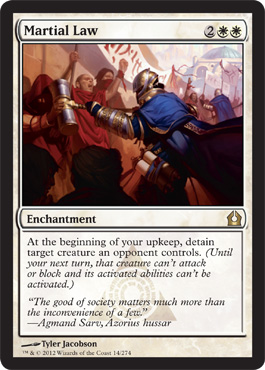
The ability on Martial Law is certainly Classic-worthy. Detain is an interesting mechanic, as it can tie up Oath fatties, Tinker-bots, and any other creature which could pose a problem. Sadly, 4 mana is much too high of a price to pay for this ability. 3 mana could have been fringe-playable, but 2 mana would have been broken, especially in Standard.
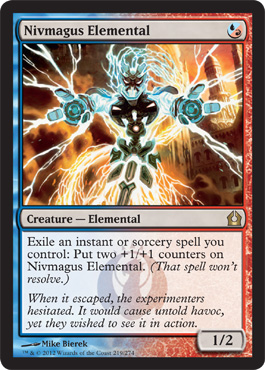
The last card to discuss today is Nivmagus Elemental. Quirion Dryad sees some play in Classic and the Elemental is similar to Dryad; it can grow as the game progresses, which can present a problem for some decks to deal with. Being blue, it naturally passes the Force of Will-test, and we’ve seen other 1-mana creatures that need help to get bigger see a lot of play recently (*cough* Delver of Secrets *cough*). The best application for this is in decks that pack a lot of instants and sorceries while facing decks that pack countermagic, as this elemental puts to good use those spells which were going to be countered no matter what. Could this be a Delver mirror breaker? I doubt it, mostly because it doesn’t have any evasion, but we’ve seen stranger things happen.
Wrap-up
All in all, I’m a little disappointed by the follow-up to Ravnica. The lack of format-defining cards is a little bit of a let down considering the original Ravnica brought us Dark Confidant and the dredge mechanic.
In looking at the list above, there are an awful lot of multicolored or hybrid spells. Classic doesn’t have access to the Moxen, so does Chrome Mox‘s value increase? Sound off in the comments!
Finally, with the influx of shocklands, can Classic attract more players to the format? I don’t believe so, but I expect most of the shocklands to initially be 1/3 the price of their dual land counterparts, and most Standard players will be getting playsets of each. While shocklands are much worse than the real dual lands, it’s possible that we could see some people joining Classic DEs with “Standard manabases”. Perhaps that could be a good way to capture new players… or maybe not. Let me know your thoughts in the comments and if I may have missed a card that could be considered for Classic!
*****
On a completely separate note, I want to congratulate albertorodalv on winning the 1st QT of the ClassicQuarter.com League featuring the Classic Invitational! QT #2 will begin on Monday, October 29th, and decklists and registration are due at 11:59:59 pm EDT on Saturday, October 27th. For more info, please visit the discussion thread on CQ.com. [Editor's Note: The first QT for this Player-Run Event was extremely well-managed, convenient, and enjoyable. Every participant was friendly and flexible, and the prizes were quite good, too (I expect them to be good again). If you have any interest in the Classic format (or in Eternal formats in general), this league would be a great way to get started. ChrisKool and I played in it, and we'll be playing in QT #2 as well. I highly recommend it. --PlanetWalls]
enderfall
Clan Magic Eternal
Follow me on Twitter @enderfall

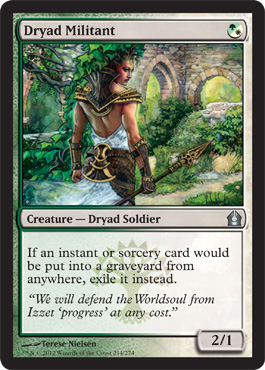
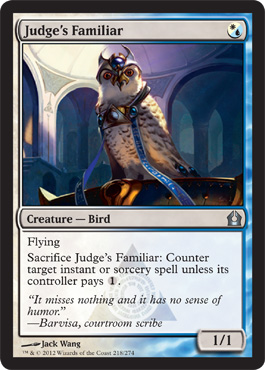
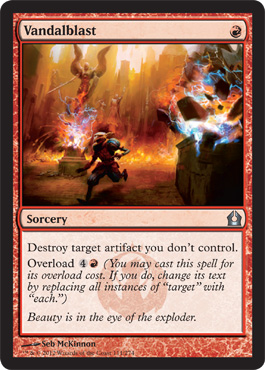

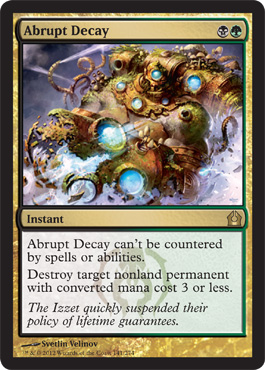

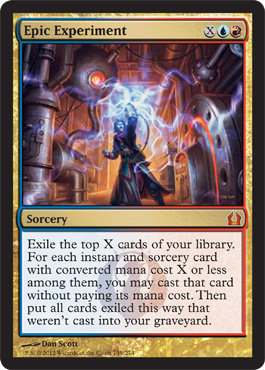

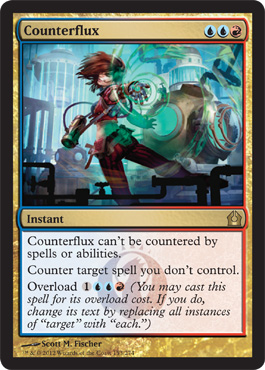
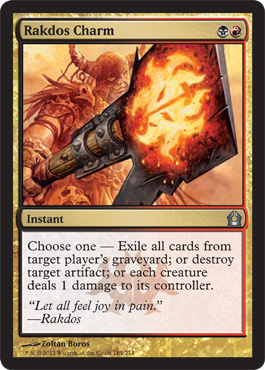


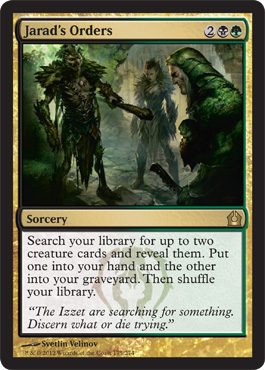




I’ve done some thinking, and I suppose Angel of Serenity could be a good choice out of the sideboard in Oath Decks. The fact that it can hit cards in graveyards gives it some benefit in fighting off Dredge decks… It could also bring about a version of Oath that’s similar to Elephant Oath, which utilizes Terastodon, should there be a lightning fast creature deck (Affinity??) running rampant. Angel of Serenity doesn’t hit non-creature permanents, but that doesn’t necessarily mean her ability is not useful in an environment that would be in need of creature control on this scale.
What do you think about Detention Sphere? Now Oblivion Ring can be pitched to Force, and with a slight upside every once in a while.
I believe that Abrupt Decay is the best Return to Ravnica card for Classic. Will I put my money where my mouth is this coming CQT? Maybe.
I can’t play Detention Sphere because of Abrupt Decay:(